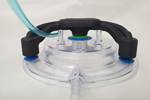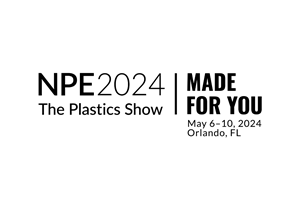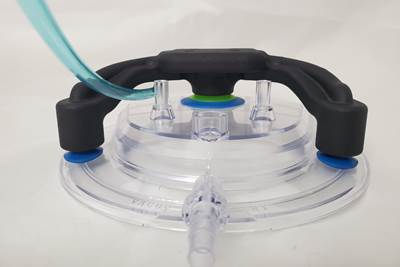Economic Outlook - May 2008
Plastic Bottles Face Slower Growth
Plastic bottle demand will pick up gradually in the second half of this year as the U.S. economy, particularly consumer spending, slowly regains momentum.
Plastic bottle demand will pick up gradually in the second half of this year as the U.S. economy, particularly consumer spending, slowly regains momentum. Conditions look favorable for more rapid growth in 2009, but volatility in oil and natural-gas prices remains a major risk to the expected recovery in both consumer spending and plastic bottle production.
A MATURING MARKET
The plastic bottle market is rapidly maturing. This means that future growth in bottle demand will be decreasingly dependent on factors such as new product introductions and penetration into the markets of substitute materials. Instead, demand will be increasingly affected by trends in consumer spending and resin prices. The average annual growth rate in bottle output has decelerated to about 2% in recent years, and due to the double whammy of high resin prices and sluggish growth in consumer spending, growth will be even slower in the first half of 2008.
From the 1990s through the first half of this decade, the bottle market enjoyed stellar growth driven by a steady arrival of new beverage and household-chemical products. But starting in 2006, growth slowed as the market became more saturated with single-serve beverages and concentrated detergents. There are still some market segments that represent major growth areas for plastic bottles, most notably beer, and perhaps even wine. There may also be opportunities for biodegradable bottles. But long-term growth rate in bottle consumption by consumers will be in the moderate range of 2% to 3%/yr for the foreseeable future.
PP BOTTLES ARE LOOKING UP
Gains in polypropylene bottle production have exceeded the average for the past few years and growth in this relatively small segment will be relatively strong for a while longer. Output of PP bottles exhibits a distinct two-to-three-year cyclical pattern and it appears to have hit a cyclical low point in the first half of 2008. So demand for these products should enter a recovery later this year. After a decline of 3% in 2007, growth of 2% this year will be followed by a gain of at least 5% in 2009.
For polyethylene bottles, the outlook varies depending on the end-use market. The trend in liquid-food bottles is quite cyclical, and the market is currently at or very near a two-year cyclical low point. The average rate of growth has been close to 2%/yr for the past 10 yr, but this is a mature market segment, so the average will likely decline gradually in the future. After a rise of 1% to 2% in 2007, the forecast calls for another gain of 1% in 2008 followed by a 4% rise in 2009.
The other two large market segments for PE bottles are household chemicals and cosmetics and toiletries. Demand for such products has been steady or a bit higher in recent years, and these market segments tend to be quite stable. The major factors in future trends for bottles supplied to these markets will likely be the result of regulations pertaining to recyclability and recycled-resin content in the bottles rather than changes in market demand. Overall consumption will grow at a stable pace.
So overall, the trend in plastic bottles will correlate ever more closely with consumer spending. This is not a bad thing, since consumer spending will continue to expand over the long term. In the first half of 2008, growth in consumer spending is the weakest since 1995, but an outright decline in real spending, which has not occurred since the 1990-1991 recession, is unlikely.
About The Author
Bill Wood, an independent economist specializing in the plastics industry, heads up Mountaintop Economics & Research, Inc. in Greenfield, Mass. He can be contacted by e-mail at BillWood@PlasticsEconomics.com.
Related Content
Plastics Processing Contraction Slows Slightly
While the market is still sluggish, future ´óĎó´«Ă˝ outlook rose significantly from last month.
Read MoreProcessing Activity Dips in May
Plastics processing took a downturn in May, the first appreciable dip since November 2023.
Read MorePlastics Processing Activity Drops in November
The drop in plastics activity appears to be driven by a return to accelerated contraction for three closely connected components — new orders, production and backlog.
Read MoreProcessing Megatrends Drive New Product Developments at NPE2024
It’s all about sustainability and the circular economy, and it will be on display in Orlando across all the major processes. But there will be plenty to see in automation, AI and machine learning as well.
Read MoreRead Next
See Recyclers Close the Loop on Trade Show Production Scrap at NPE2024
A collaboration between show organizer PLASTICS, recycler CPR and size reduction experts WEIMA and Conair recovered and recycled all production scrap at NPE2024.
Read MoreMaking the Circular Economy a Reality
Driven by brand owner demands and new worldwide legislation, the entire supply chain is working toward the shift to circularity, with some evidence the circular economy has already begun.
Read MoreBeyond Prototypes: 8 Ways the Plastics Industry Is Using 3D Printing
Plastics processors are finding applications for 3D printing around the plant and across the supply chain. Here are 8 examples to look for at NPE2024.
Read More











